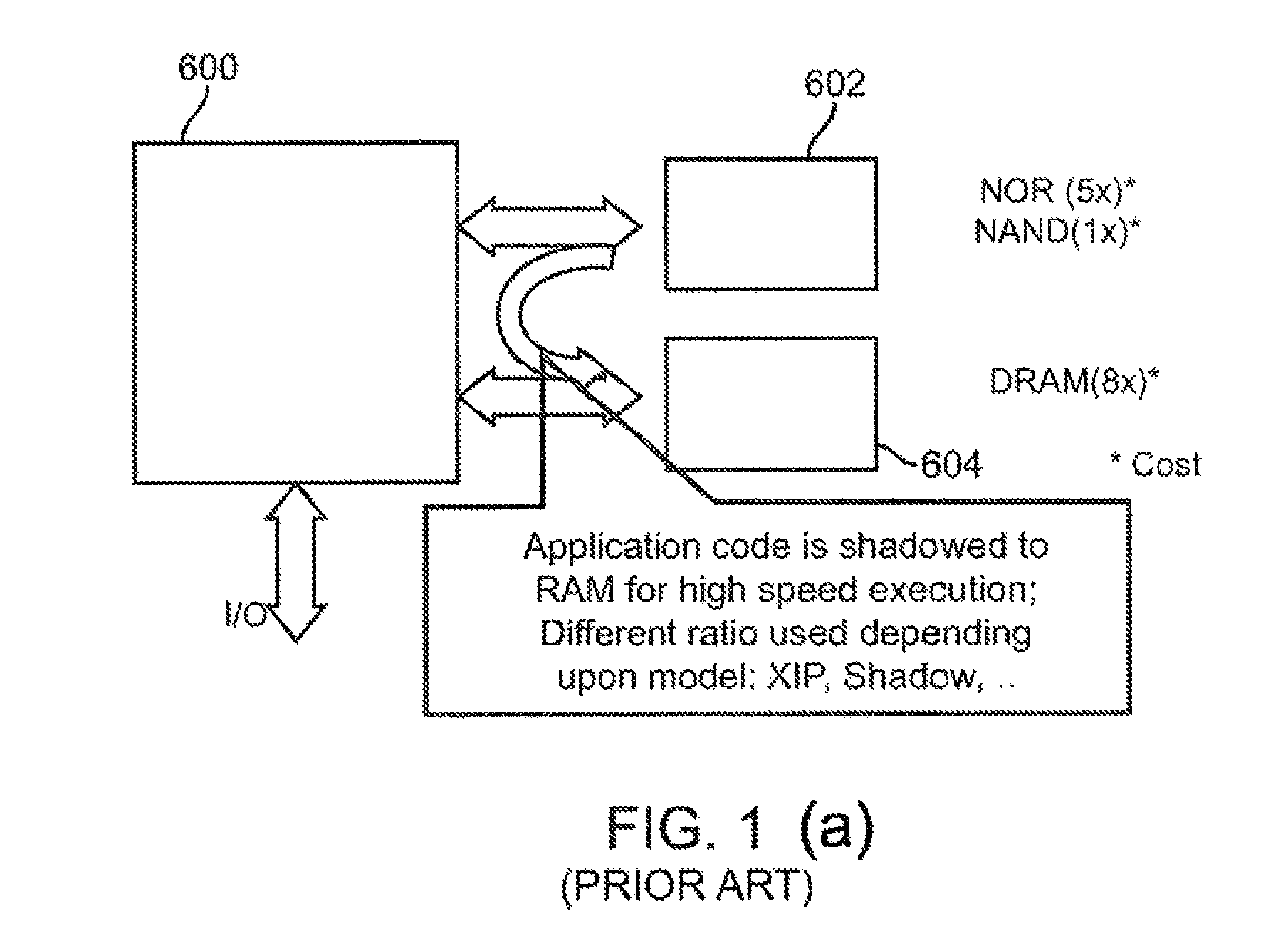Hybrid non-volatile memory device
a non-volatile memory and hybrid technology, applied in the direction of memory architecture accessing/allocation, memory adressing/allocation/relocation, instruments, etc., can solve the problems of increasing design complexity, time to market, and increasing cost, so as to reduce the switching current in the magnetic memory and high memory capacity
- Summary
- Abstract
- Description
- Claims
- Application Information
AI Technical Summary
Benefits of technology
Problems solved by technology
Method used
Image
Examples
Embodiment Construction
[0050]In the following description of the embodiments, reference is made to the accompanying drawings that form a part hereof, and in which is shown by way of illustration of the specific embodiments in which the invention may be practiced. It is to be understood that other embodiments may be utilized because structural changes may be made without departing from the scope of the present invention. It should be noted that the figures discussed herein are not drawn to scale and thicknesses of lines are not indicative of actual sizes.
[0051]In an embodiment of the present invention, a diode-addressable current-induced magnetization switching (CIMS) memory element is disclosed. In one embodiment of the present invention, the memory element includes a magnetic tunnel junction (MTJ) on top of which is formed a diode for storing digital information. The memory element is stackable into arrays with memory elements in each stack, and each stack separated by deposited dielectric and CMPed (che...
PUM
 Login to View More
Login to View More Abstract
Description
Claims
Application Information
 Login to View More
Login to View More - R&D
- Intellectual Property
- Life Sciences
- Materials
- Tech Scout
- Unparalleled Data Quality
- Higher Quality Content
- 60% Fewer Hallucinations
Browse by: Latest US Patents, China's latest patents, Technical Efficacy Thesaurus, Application Domain, Technology Topic, Popular Technical Reports.
© 2025 PatSnap. All rights reserved.Legal|Privacy policy|Modern Slavery Act Transparency Statement|Sitemap|About US| Contact US: help@patsnap.com



